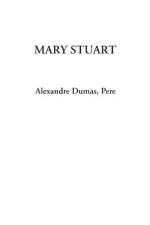“George,” she said to him, “choose a guard of twenty men for me, and take command of them: you will not quit me.”
George bent low in obedience, chose twenty from among the bravest men, placed the queen in their midst, and put himself at their head; then the troops, which had halted, received the order to continue their road. In two hours’ time the advance guard was in sight of the enemy; it halted, and the rest of the army rejoined it.
The queen’s troops then found themselves parallel with the city of Glasgow, and the heights which rose in front of them were already occupied by a force above which floated, as above that of Mary, the royal banners of Scotland, On the other side, and on the opposite slope, stretched the village of Langside, encircled with enclosures and gardens. The road which led to it, and which followed all the variations of the ground, narrowed at one place in such a way that two men could hardly pass abreast, then, farther on, lost itself in a ravine, beyond which it reappeared, then branched into two, of which one climbed to the village of Langside, while the other led to Glasgow.
On seeing the lie of the ground, the Earl of Argyll immediately comprehended the importance of occupying this village, and, turning to Lord Seyton, he ordered him to gallop off and try to arrive there before the enemy, who doubtless, having made the same observation as the commander of the royal forces, was setting in motion at that very moment a considerable body of cavalry.
Lord Seyton called up his men directly, but while he was ranging them round his banner, Lord Arbroath drew his sword, and approaching the Earl of Argyll—
“My lord,” said he, “you do me a wrong in charging Lord Seyton to seize that post: as commander of the vanguard, it is to me this honour belongs. Allow me, then, to use my privilege in claiming it.”
“It is I who received the order to seize it; I will seize it!” cried Seyton.
“Perhaps,” returned Lord Arbroath, “but not before me!”
“Before you and before every Hamilton in the world!” exclaimed Seyton, putting his horse to the gallop and rushing down into the hollow road—
“Saint Bennet! and forward!”
“Come, my faithful kinsmen!” cried Lord Arbroath, dashing forward on his side with the same object; “come, my men-at-arms! For God and the queen!”
The two troops precipitated themselves immediately in disorder and ran against one another in the narrow way, where, as we have said, two men could hardly pass abreast. There was a terrible collision there, and the conflict began among friends who should have been united against the enemy. Finally, the two troops, leaving behind them some corpses stifled in the press, or even killed by their companions, passed through the defile pell-mell and were lost sight of in the ravine. But during this struggle Seyton and Arbroath had lost precious time, and the detachment sent by Murray, which had taken the road by Glasgow, had reached the village beforehand; it was now necessary not to take it, but to retake it.




